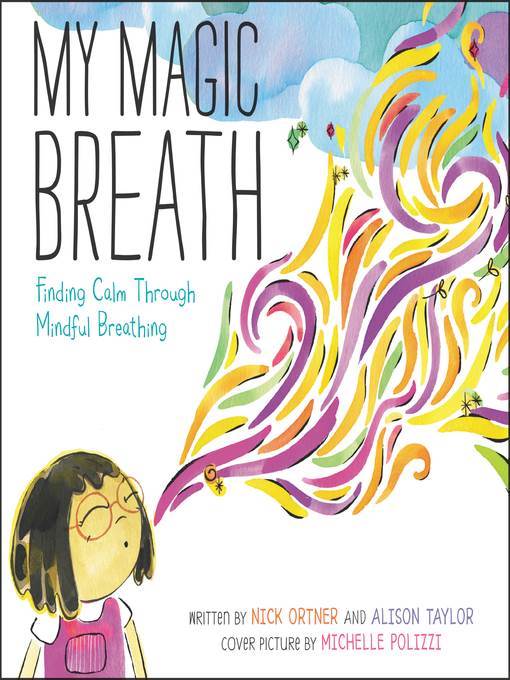
My Magic Breath
فرمت کتاب
audiobook
تاریخ انتشار
2018
نویسنده
Emily Woo Zellerناشر
HarperCollinsشابک
9780062842015
کتاب های مرتبط
- اطلاعات
- نقد و بررسی
- دیدگاه کاربران
نقد و بررسی

April 9, 2018
“Do you have the magic breath?” begins this picture book focused on mindful breathing. “Let’s see... Take a deep breath in... and blow it out!” A bespectacled child blows out bright, swirling patterns of color, a bit like a dragon’s fiery breath. “The magic breath is special,” Ortner and Taylor explain. “It helps when you have too many thoughts running through your mind.” A second child breathes out through her nose while thinking about something that makes her happy: her magic breath carries over two spreads, blowing the seeds off a dandelion. Thinking happy thoughts isn’t always easy, especially after a hard day. A somber child rests his hands under his chin, milky pastel clouds dripping raindrops around him. Readers are invited to visualize their own happy thoughts to help push the sad ones away. Polizzi’s airy watercolors nicely harmonize with the interactive aspect of the text (“Can you blow that sad thought right off the page?”), giving the book potential as either a resource for anxious readers or as a choice for group readalouds. Ages 4–8.

April 1, 2018
PreS-Gr 1-An illustrated guide to mindful breathing for young readers. The first line asks: "Do you have the magic breath?" Simple text then leads readers through a series of breathing cues, prompting them to focus on happy thoughts and to push away sad ones. ("Sometimes when you are worried, or nervous, or sad, deep breaths can help push some of those thoughts away. Think about when you feel happy!") This kind of language can be misleading as mindfulness is not about "pushing away" bad or sad thoughts but rather acknowledging them and being mindful of their presence and impact. The illustrations and text fall into tropes of blue tones being associated with sad thoughts and bright colors with happiness. A full-page spread of bright yellow, orange, green, and purple swirls and flowers reads: "Now, that looks like happiness. Keep blowing! Keep thinking happy!" The text and illustrations teeter on the edge of sappy and saccharine, many times toppling over. VERDICT A book that does not beg more than one reading either in a group setting or one-on-one. Most collections will want to skip.-Megan Kilgallen, Packer Collegiate Institute, Brooklyn
Copyright 2018 School Library Journal, LLC Used with permission.

March 1, 2018
A little girl breathes her "magic breath," transforming worry and sadness into serenity. Learning to breathe deeply to find calm can be a wonderful coping tool for children--but not as instructed here. The book states that breathing deeply can help us to "push some of those thoughts away" when we are nervous or sad, a technique that can be augmented by bringing to mind happy thoughts to replace the sad ones. This strategy may be effective, but it is not (as the subtitle states) "mindful," as true mindfulness practice encourages noticing everything as it is, even the unpleasant parts of life. The advice also seems to assume an audience of relative privilege. For vulnerable children, strategies of intentionally replacing unpleasant thoughts with more favorable ones can, far from bringing peace, actually reinforce destructive messages. Children experiencing abuse or discrimination often receive messages from adults in power that they deserve what is happening to them, so telling such children to simply breathe away their anxiety masks the very real issue underlying the symptom. Even leaving that concern aside, the book has very little to engage young readers. It offers no characters or plot, and most of the illustrations are simple mishmashes of color used to convey happy or sad breaths.While the use of "mindful" in the title will grab the attention of many, readers seeking tools to truly explore mindfulness with children are better served elsewhere. (Picture book. 4-8)
COPYRIGHT(2018) Kirkus Reviews, ALL RIGHTS RESERVED.

























دیدگاه کاربران